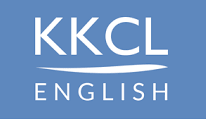Places in a town: hairdresser’s, supermarket, café, bank, train station, library, playground, fast food restaurant, museum, school
Will is in the supermarket with Boosty helping with the shopping, but he has lost his Mum. Will thinks about the places she usually/sometimes/hardly ever/never goes. At the same time Will’s Mum is looking for Will. She thinks about the places that he usually/sometimes/hardly ever/never goes.
Can Will and Boosty find his Mum? Has Will put the right items in his trolley? Where do you always/sometimes/never go?
Follow up activity after watching Animation to check understanding.
Click on the link: ACTIVITY 1
Students can answer the questions by:
For online classes the Teacher can use the emoji function to correct
![]()
Questions:
This activity could be done before the video is played or as a follow up activity. The teacher can put students in to teams and ask them to make True or False statements about themselves or members of their team: ‘True or False, Maria never goes to the Library’
Target language reinforcement to provide students with a controlled practice of ‘ How often do you go to….?/ I always/sometimes/rarely/never go to ….’
individual answers
To develop spoken interaction skills through a listening + pronunciation task.
Click on link: ACTIVITY 3
See more ideas about how to teach long vowel sounds here:
13 Awesome Ways To Teach Long Vowel Sounds – Top Notch Teaching
Not available
To connect topic to real life experience and teach vocabulary via a game format.
Click the link: ACTIVITY 4
Answers are provided
To engage students creatively with target language through a joint project or pair work activity.
Click on this link: ACTIVITY 5
Face-to-face class:
Online class:
Try a place that they know well first to build confidence
Not available




The BOOST Project (Building Open Online Series for Teaching) aims to improve the digital readiness of teachers of English as a foreign language to students aged 8 -14 by providing an open-access series of engaging native-speaker content videos linked with a Resource Pack of ready-made activities to stimulate production of the language in online learning.
